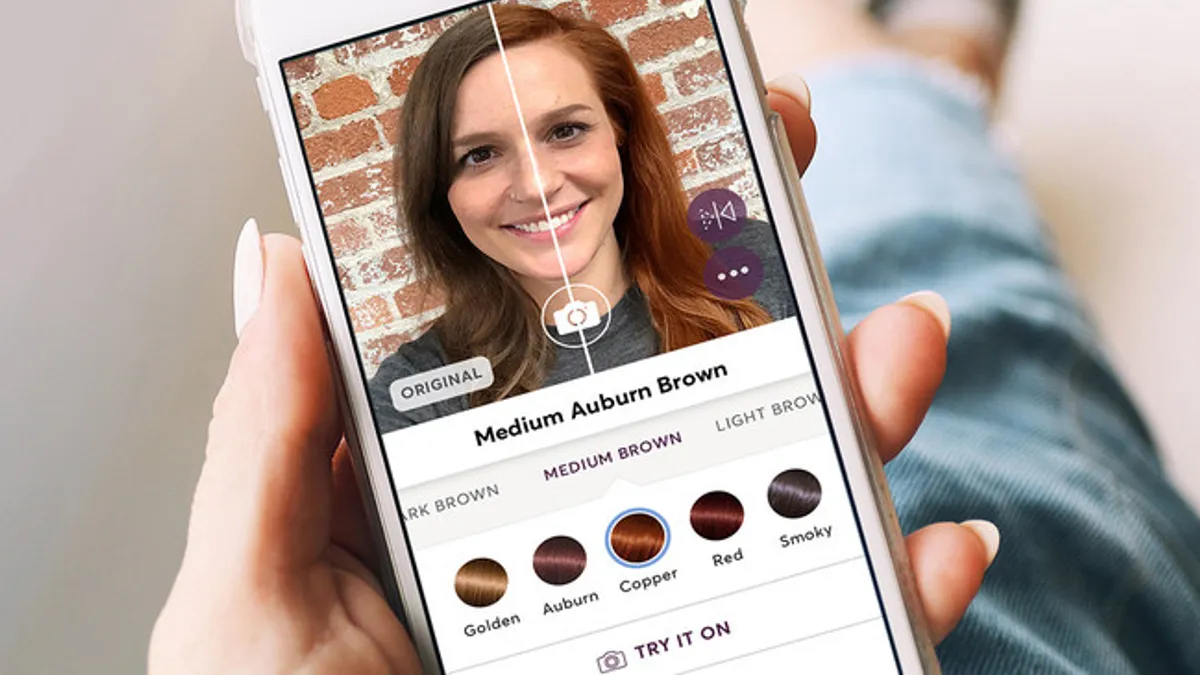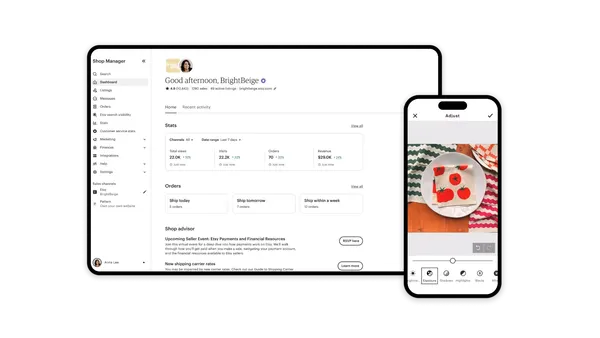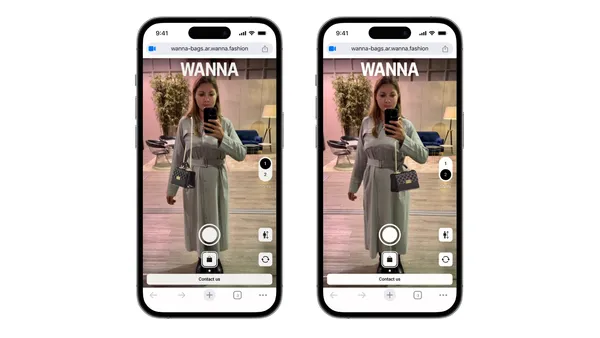Brief:
- The rollout of high-speed 5G mobile service is set to drive growth of augmented reality shopping to 100 million consumers by next year, researcher Gartner estimates. Retailers will add AR technology, which overlays digital images on a person's view of the real world, to their stores and e-commerce channels to provide more immersive experiences for shoppers.
- Almost half (46%) of retailers plan to deploy either AR or VR technology, which provides a completely immersive view of a computer-generated world, by next year, per the Gartner report shared with sister publication Mobile Marketer. The technologies can help shoppers virtually try on products through advanced graphical visualization and simulation.
- AR/VR applications for 5G mobile service are boosting expectations for new revenue among businesses, Gartner predicts. 5G's higher speeds better enable real-time rendering for immersive video, shorter download and reduced latency, as well as allowing for brands to extend their shopping experiences beyond stores and traditional websites.
Insight:
AR and VR technologies may be one of the biggest beneficiaries of 5G's impending rollout, which major cellular carriers like Verizon, AT&T, Sprint and T-Mobile are gradually working to debut across the U.S. over the next few years. The higher speeds promise to let smartphones, interactive displays and AR/VR headsets quickly render computer-generated imagery for shoppers, whether they're at home, in stores or on the go.
However, AR/VR and 5G could end up as victims of overhyped promises, as the technology is still fragmented across platforms, along with a lack of standards for user experience, Jon Reily, VP and global commerce strategy lead at Publicis Sapient, said in emailed statements to Mobile Marketer. "We'll see increased use of the technology in the home furnishings and home improvement sectors, and neat proof of concepts continue for cosmetics and clothing, but I am very dubious that we'll see 100 million users in the next 24 months."
Meeting consumer expectations will be a challenge. Shoppers appear to be ready to try new AR/VR tech and cashierless checkout that improve their in-store experience, but retailers are lagging in providing them, according to a separate survey by BRP Consulting. Almost one-third (32%) of consumers say they're likely to shop at a store that offers AR experiences, but just 9% of retailers actually offer the technology.
Brands and retailers have experimented with AR/VR in various ways. Numerous CPG marketers have added AR features to their packaging to deliver more product information to shoppers as they browse aisles. For example, Angry Orchard hard cider and craft brewery Devils Backbone recently brought their respective packaging to life with QR codes that activated an immersive experience when scanned with a smartphone.
Retailers like Ikea, Houzz, Anthropologie and Williams-Sonoma have added 3D and AR tech to their marketing mix to enhance shoppers' experience. Cosmetics retailer Sephora introduced an AR mirror in 2014, while Macy's has used smart mirrors in dozens of stores. Macy's last month expanded the AR features of its mobile app to let shoppers virtually try on more than 1,000 cosmetics products. Among beauty brands, L'Oréal, Estée Lauder, Maybelline and others have rolled out AR tools to help customers virtually experiment with products in stores and at home.












